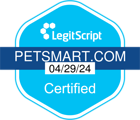- Hover over image to zoom in
- Hover over image to zoom in
About this item
Inactive Ingredients: Complete inactive ingredients list not provided by manufacturer.
Usage: *For complete Description, please review the full prescribing information in the manufacturer package insert. Cerenia Tablets should be given orally as directed by your veterinarian. Wash your hands thoroughly with soap and water after handling the medication. Please consult your veterinarian before making any changes or discontinuing the prescribed dosing schedule. This medication can be given with or without food; however, giving with a small amount of food may help prevent gastrointestinal side effects. Do not wrap tablets tightly in food, as this may affect how well the medication will work. Avoid giving this medication with a full meal, especially if it is being given to prevent vomiting associated with motion sickness⁄travel. If your pet vomits or appears unwell after receiving a dose on an empty stomach, give future doses with a small amount of food or a treat. If vomiting continues, contact your veterinarian.
Precautions: *For complete Description including warnings and precautions, please refer to the manufacturer package insert. For oral use in dogs only– not for use in humans. Keep this and all drugs out of the reach of children. In case of accidental ingestion, contact a physician immediately. This medication can cause localized skin irritation in some individuals. Wash your hands thoroughly with soap and water after handling. In case of accidental eye exposure, flush with water for 15 minutes and seek medical attention. Use with caution in animals with liver impairment⁄disease, arrhythmias (abnormal heart rhythms), gastrointestinal obstruction (blockage), or those that have ingested toxins. Caution is also advised when higher doses of maropitant are administered to puppies younger than 11 weeks of age. The safe use of this medication has not been evaluated in breeding, pregnant, or lactating animals. Discuss the risks of using this medication with your veterinarian if your pet is in one of these groups. Do not administer to animals with a known history or suspected allergy⁄hypersensitivity to this medication or any of its ingredients. Allergic reactions to medications may occur. Be sure to inform Vetsource and your veterinarian if your pet has any known drug sensitivities or allergies. If your pet displays symptoms of an allergic reaction, discontinue therapy and call your veterinarian immediately or seek emergency veterinary attention. Symptoms may include (but are not limited to): swollen lips, tongue, face, or airways; difficulty breathing; agitation; profuse salivation; and widespread hives or itching.
Drug & Food Interactions: The following drugs* may have potential interactions with this medication: azole antifungals (e.g., itraconazole, ketoconazole), benzodiazepines (e.g., diazepam), calcium channel blockers (e.g., amlodipine, diltiazem), clomipramine, corticosteroids (e.g., dexamethasone, prednisone), hydroxyzine, NSAIDs, opioids, phenobarbital, sotalol, SSRIs (e.g., fluoxetine, sertraline), tramadol, and warfarin. *NOTE: this may not be a comprehensive list. Contact your veterinarian if your pet experiences any unusual reactions when different medications are given together. Please ensure your veterinarian is aware of all medications and supplements that your pet is currently receiving. Your veterinarian may prescribe multiple medications, even if a potential drug interaction may occur. In these instances, your veterinarian may adjust the dosages or monitor your pet more closely.
Overdose: If you have any reason to suspect an overdose, call your doctor⁄veterinarian or the appropriate poison control resource immediately. For humans: The national toll–free Poison Help line, 1–800–222–1222, will connect you to your local poison center in case of emergency. This service is available nationwide and in most U.S. territories. For animals: The ASPCA Animal Poison Control Center is available 24 hours a day, 365 days a year at 888–426–4435. Pet Poison Helpline® also provides a 24⁄7 animal poison control service at 855–764–7661. *Please note: this information is for third–party services and is provided for convenience in case of potential poison–related emergencies. There may be consultation fee for these services.
Storage: Store in a cool, dry place at a controlled room temperature (68 to 77°F, excursions permitted between 59 and 86°F). Keep this medication in its original packaging and out of the reach of children and pets. Only remove 1 tablet at a time from the foil–backed blister card and return the card to the box to protect from light. Tablets should remain sealed and only taken out of the blister pack at the time of dosing. If you were instructed to split the tablets, wrap the remaining portion tightly in the blister pack foil and store securely until it is time for the next dose. Store away from heat and direct sunlight. Do not store in the bathroom, near the kitchen sink, or in damp places. The medicine may break down if exposed to heat or moisture.
Disclaimer: The content provided on this page is NOT medical advice. All content, including the images and product description above, is intended for general informational purposes only and should not be considered a substitute for professional veterinary consultation, diagnosis, or treatment. Consult your veterinarian for complete information about this product and how it fits into your pet's individual treatment plan. Last revised: 7⁄23⁄2025




